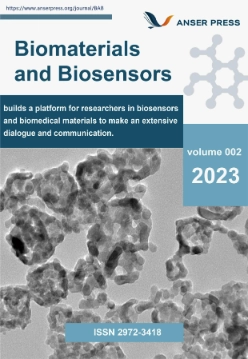Open Access
Review
Advances in rapid detection of Pseudomonas aeruginosa with DNase-based sensors
by
Shriya Madan
and
Yongzhi Chen
BAB 2023 2(2):11; 10.58567/bab02020002 - 17 October 2023
Abstract
Pseudomonas aeruginosa is a common pathogen, and its presence in medical environments and water bodies has attracted widespread attention. Traditional detection methods are usually time-consuming and cumbersome, so it is necessary to develop a rapid and sensitive detection technology. DNase can specifically recognize and cut DNA molecules complementary to its substrate sequence
[...] Read more
Pseudomonas aeruginosa is a common pathogen, and its presence in medical environments and water bodies has attracted widespread attention. Traditional detection methods are usually time-consuming and cumbersome, so it is necessary to develop a rapid and sensitive detection technology. DNase can specifically recognize and cut DNA molecules complementary to its substrate sequence. The researchers took advantage of this property to design various DNase-based sensors for detecting the presence of Pseudomonas aeruginosa. These sensors usually use DNase as a recognition element to identify target strains by hybridizing with specific DNA sequences. When the target strain is present, DNase is activated and begins to catalyze the cleavage reaction, producing a detectable signal. This DNase-based sensor has the advantages of rapidity, high sensitivity, and high specificity. In addition, the researchers also explored combining DNase with nanomaterials, fluorescent dyes, etc. to further improve the performance of the sensor. These improvements have improved the detection ability of the sensor in complex samples, laying the foundation for practical applications. With the continuous improvement of technology, these sensors are expected to be widely used in medical, environmental monitoring and other fields, and provide more efficient and convenient solutions for bacterial detection. This study reviewed the research progress of DNase-based sensors for the rapid detection of Pseudomonas aeruginosa.
Show Figures

